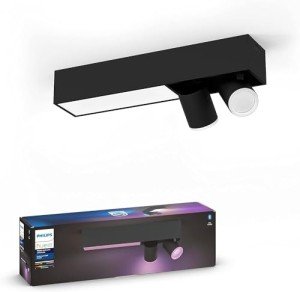10 Essentials Concerning Buy Kitchen Lighting UK You Didn't Learn At School
A Comprehensive Guide to Buying Kitchen Lighting in the UK
When it comes to kitchen style, lighting plays an important role in performance, aesthetic appeals, and general atmosphere. Choosing the best kitchen lighting can significantly enhance how you utilize space, affecting everything from meal preparation to amusing visitors. With the vast range of choices readily available in the UK, it can be intimidating to pick the perfect kitchen lighting. Lighting And Lamps intends to streamline the procedure and supply important insights into the different kinds of kitchen lighting, factors to think about, and tips on making informed choices.
Kinds Of Kitchen Lighting
Understanding the various types of kitchen lighting is essential for attaining a well-lit space. Each classification serves an unique purpose and can be employed to develop a layered lighting impact.
Type of Lighting
Description
Task Lighting
Provides focused illumination for specific tasks, such as cooking, checking out recipes, or cleaning meals.
Ambient Lighting
Deals total lighting for the entire kitchen, normally through overhead fixtures or ceiling lights.
Accent Lighting
Highlights specific functions or decorative elements, such as artwork, backsplashes, or architectural details.
Decorative Lighting
Includes a stylistic or aesthetic touch, such as pendant lights and chandeliers that work as focal points.
Job Lighting
Task lighting is vital for making sure security and efficiency while preparing meals. Under-cabinet lights, for example, are a popular choice as they brighten the countertop without including shadows, making tasks easier.
Ambient Lighting
Ambient lighting provides a warm, welcoming radiance to the kitchen. This can be accomplished through ceiling-mounted fixtures, recessed lighting, or chandeliers. The secret is to make sure consistent light distribution throughout the area.
Accent Lighting
Accent lighting, utilizing fixtures like wall sconces or LED strip lights, directs attention to particular locations or features within the kitchen. This type of lighting can be particularly reliable in showcasing lovely backsplashes, cabinet designs, or decorative products.
Decorative Lighting
Decorative lighting adds character and design to a kitchen. Pendant lights above an island or an elegant chandelier can end up being statement pieces, improving the kitchen's total design.
Factors to Consider When Buying Kitchen Lighting
Choosing the suitable kitchen lighting involves evaluating numerous vital aspects to ensure you make the very best decisions for your area.
Design and Size of the Kitchen
- Comprehend the dimensions of your kitchen and recognize crucial work areas. The design will identify how you distribute light.
Functionality
- Think about how you utilize the kitchen. If you frequently prepare or host, go with job lighting. If your kitchen doubles as a dining location, ambient lighting will also be important.
Style and Aesthetics
- Ensure lighting fixtures match the kitchen's style. Whether modern, traditional, or eclectic, the design needs to harmonize with other aspects.
Color Temperature
- Light color considerably affects the atmosphere. Warmer tones (2700K-3000K) create welcoming environments, while cooler tones (4000K-5000K) are better suited for task-oriented areas.
Energy Efficiency
- Consider LED alternatives, as they consume less energy and have a longer life expectancy compared to incandescent or halogen bulbs.
Dimming Capability
- Integrating dimmer switches permits versatility in adjusting light strength for numerous activities.
Tips for Buying Kitchen Lighting
When looking for kitchen lighting, keep the following tips in mind:
- Measure First: Measure the areas where you prepare to set up fixtures to guarantee they fit well.
- Mix Fixtures: Combine different types of lighting for a balanced technique, blending task, ambient, and decorative alternatives.
- Consider Placement: Pay attention to the height at which you set up fixtures. For islands, pendants need to hang 30-36 inches above the surface area.
- Evaluate Brightness: Look at lumens instead of watts; brighter does not constantly indicate better in terms of functionality.
- Choose Quality: Investing in quality fixtures will conserve you money in the long run due to sturdiness and lowered maintenance requirements.
Frequently Asked Questions (FAQs)
1. What is the best kind of lighting for kitchen jobs?
Job lighting, such as under-cabinet lights or pendant lights over work surface areas, is perfect for kitchen tasks as it supplies concentrated lighting.
2. How do I choose the right size of pendant lights?
A basic rule of thumb is that the size of the pendant must be around one-third the width of the island. If your island is 4 feet wide, try to find pendants that are around 12 inches in diameter.
3. Can I utilize a dimmer switch for all kinds of kitchen lights?
Not all lights are dimmable. Check the item specs before setup. LED lights and some fluorescent lights are most likely to need compatible dimmer switches.
4. How can I enhance my kitchen lighting without significant restorations?
Think about incorporating plug-in under-cabinet lighting, elegant floor lamps, or battery-operated LED lights to improve illumination without extensive changes.
5. Is it essential to hire a professional to install kitchen lighting?
While simple installations can be done independently, it's advisable to employ a qualified electrician for complex setups to make sure security and performance.
Selecting the right kitchen lighting in the UK involves comprehending various lighting types, examining necessary aspects, and implementing strategic tips. By focusing on the kitchen's design, performance, and design, property owners can produce a well-lit, welcoming area that boosts everyday activities and occasions. Whether embarking on a total remodelling or a simple lighting upgrade, the best choices will illuminate both the kitchen and the culinary experiences shared within it.
